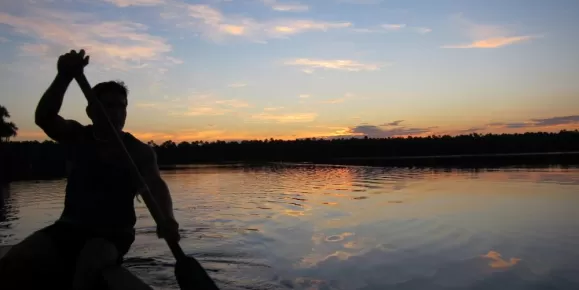The Tambopata National Reserve is one of the last easily accessible virgin tropical rainforests in the world. The Reserve, a 274,690-hectare area (678,774-acre), offers a wealth of biodiversity, as well as magnificent natural landscapes. Puerto Maldonado, known as the “Capital of Biodiversity,” is the largest city of the Tambopata region. Overlooking the confluence of the Tambopata and Madre de Dios Rivers, Puerto Maldonado is 400 meters (1,312 feet) above sea level, 650 km (404 miles) from Cusco, and 15 km (9 miles) upriver from the Inkaterra lodge. The hotel is located 17km down the Madre de Dios River from Puerto Maldonado.
A place designed to enhance a Guide’s knowhow, interpretation skills, and leadership abilities; facilitate and promote Scientists/Investigators who are eager to engage in ongoing ITA projects or do research of their own; and host Inkaterra Travelers who want to experience the Amazon Rainforest in an intense and scholarly way. The specially selected Explorer Guides will guide both groups of Inkaterra Travelers and Student Groups during their stay at the station.
Family cabañas (max 4 guests) or regular cabañas (2 guests) are available. Both options include 100% cotton sheets, a fleece blanket, extra blanket available, anti-allergic pillows, mosquito net; large personal bathroom, hot water, shampoo, conditioner and liquid soap dispensers, a set of clean towels; personal dividing closets with plenty hangers, personal working table with a security drawer. Free internet during electricity hours and housekeeping daily. Each Cabaña has a terrace.
- One ceiling ventilator
- Reading lamp
- Rechargeable flashlight
- Umbrella
- Universal plug
Included services:
- Welcome drink
- Luggage service
- Hot water showers
- Shampoo, conditioner and soap
- Complete set of towels per guest
- Dining room and bar service
- Capacity Breakfast lunch dinner bar
- Buffet breakfast, lunch and dinner
- Limited Electricity
- Limited Complimentary Wifi
- Excursions for Travelers with Inkaterra Explorer Guides






























